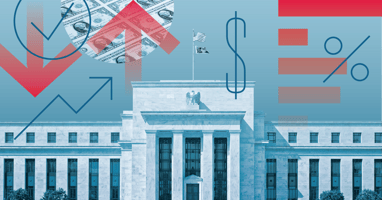Markets Hold Strong as Fed Faces a Delicate Balancing Act
Tariffs once again grabbed headlines in August, but the real drivers of the market were the Federal Reserve and corporate earnings. Investors have largely learned to discount tariff announcements, given the tendency for quick reversals, while the mixed stream of economic data continues to show resilience from consumers even as the labor market weakens and inflation remains sticky. As we enter September, these same dynamics persist—but stretched investor optimism and elevated price-to-earnings ratios suggest heightened vulnerability to volatility during what is historically one of the market’s weaker months.
The S&P 500 rose 1.9% in August and is now up more than 10% for the year. A strong second-quarter earnings season was an important tailwind, with operating earnings up 11% compared with last year’s second quarter—the best showing since 2021, when pandemic stimulus was still flowing through the economy. Technology and financials led the way, with much of the strength tied to AI-driven companies. Margin expansion has been fueled by pricing power, productivity improvements, and slowing wage growth, which helped offset elevated input costs. Overall m argins rose to 12.6%, led by record levels in the technology and communications sectors.
argins rose to 12.6%, led by record levels in the technology and communications sectors.
This backdrop has pushed valuations higher, with the S&P 500’s forward price-to-earnings ratio climbing to 22.4—well above its long-term average of 15.9. Sentiment in technology has turned perhaps too upbeat, a development that can often precede volatility. The most likely catalyst for any shift in market mood remains the Federal Reserve.
In late August, Chair Jerome Powell flagged growing risks to employment, reinforcing expectations that the Fed will cut interest rates at its September 16–17 meeting. Futures markets currently place a 88% probability on a quarter-point reduction, on September 17, unless incoming inflation reports—producer prices on September 10 and consumer prices on September 11—surprise significantly to the upside.
Treasury markets reflected these shifting expectations. Intermediate-term yields eased as investors bet that the Fed would act, and then fell sharply following the weak August labor report, which showed payroll growth of just 22,000 and an uptick in unemployment to 4.3%. Notably, mass layoffs remain absent from the data, with initial jobless claims holding steady. Employers appear to be relying more on productivity gains and pricing power to offset higher input costs rather than reducing payrolls. However, continuing claims have been gradually climbing, indicating it is becoming more difficult for displaced workers to find new jobs.
Looking ahead, the economic backdrop remains mixed: consumer and business spending continue to hold up, but the labor market is showing signs of strain. One of the key risks we see is that the Federal Reserve may keep rates elevated for too long, which could weigh more heavily on growth and the markets. Even so, we expect volatility to pick up in the near term, but believe the underlying fundamentals of the U.S. economy remain sound—potentially strengthened further by productivity gains from AI. In the meantime, within our portfolios, we maintain hedges to help cushion against market weakness, while positioning selectively—particularly in international markets—where we see ongoing relative strength.


